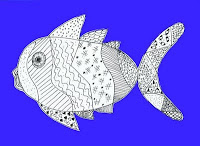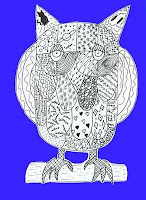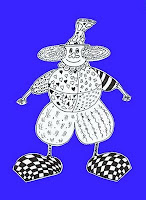Even thought this blog will mainly focus on the visual arts, I want to talk a little on the importance of music education and its inclusion in every child's education experience. Music education has a proven track record in helping to develop the maturing brain. Children should be given consistent and frequent opportunities to explore music through listening, singing and individual instrument lessons.
Music education and training offer great benefits to an
individual's intellectual development. Yet it's a fact that is easy to overlook. The US education system seems to ignore past and current research regarding the benefits of a well-rounded education in the musical arts. Perhaps the fact that its importance is overlooked or downplayed is because the study in the the arts take a long while to reap rewards. A talented musician can spend years at study before the fruits of his/her labor is realized.
Much like language learning, music learning has developmental periods. Like the learning of language, these periods arrive very early in a child's life. That is not to say that people can't benefit from musical instruction later in life, but the fact is that the earlier children are taught music, the better. These developmental periods are more like temporary open windows which suggests that early music education is critical for a child to reach his or her full potential.
In his book, Arts with the Brain in mind, Eric Jensen suggests that one can begin to "play" a music instrument even before the age of 5. This is because before the age of 5 there exists a critical period for
somasensory development (via musical instruction). Clearly, the home plays a significant role in a child's musical education. If by age three children are ready for simple keyboard practice, at least having musical instruments in the home will invite exploration and experimentation (through play) and prepare the child for eventual formal lessons.
With regard to music lessons, Jensen's suggests, "The sooner the better." I have two young grandchildren and they are 2 and 4 years old. When they come to visit my wife and me, I make available musical instruments for them to strum and bang on. In their home there are several instruments as well. I began playing piano as an elementary student. I also played clarinet throughout my school experience and today play guitar and other stringed instruments. Of all the musicians I've met in my life, the ones that are the most proficient are those that began playing at a very young age.
Jensen points out studies that show 9-year-
olds have the ability to hear and comprehend music even when no music is playing. The brain itself is giving meaning to musical ideas and sounds and forming musical compositions. One author (on an Internet article on
audiation) says that this skill is analogous to thinking in a language.
What can art educators do with these facts about musical
education? I'm a great believer in playing background music during art work time. Jensen has a book that lists nearly 1000 tunes to use in a variety of learning situations.
Top Tunes for Teaching can be found on Amazon.com as well as other book stores.
Jensen suggests that background music should be predictable (but this maxim is different for creative expriences--see more next paragraph). He suggests jazz instrumentals from musicians like George Bensen and Kenny G. Environmental music such as a running river, rain, or the ocean surf, combined with soft musical accompaniment is recommended as well. Baroque music works well too and Jensen suggests it be in a major key, done with orchestras (as opposed to individual instruments), and the movements must be adagio or andante. Here again balance and predictability are the key to effective background music. Some good suggestions for background music include Bach's Branderburg concertos, Handel's Water Music, and Vivaldi Four Seasons.
I stumbled upon a website, http://www.kaganonline.com, where they sell CD's that are specific in creating particular moods. On the one hand, general background music should be predictable. But Jensen says later that for creative stimulation, the musical type differs from the predictable kind.
Gary Lamb of http://www.garylamb.com/ has a collection of CDs that he's authored (which he sells at KeaganOnline). They are tailored for specific learning situations. His Music for the Mind series is for classroom use and I just bought two of them in that series (for creative stimulation). A third one I bought, Twelve Promises, falls into the category Jensen suggests on page 27 of his book. It's a jazz album with piano, guitar, and violin. Although I've used background music before, I've not picked specific music for a specific learning purpose. I've usually just played classical albums (lots of Motzart). I'm excited to try these out and see how the children respond.
I ran across a link just the other day on the benefits of integrating the musical and visual arts. I'm exploring this idea further and when I have something good to share, I will write more on that idea. If you have any thoughts or ideas on what I've said here, I would love to hear them.
 1st Grader's Turkey Picture
1st Grader's Turkey Picture background, and waterpaints the whole picture. I stress background details in my students' artwork. I like the neat little touch of the background fence.
background, and waterpaints the whole picture. I stress background details in my students' artwork. I like the neat little touch of the background fence.








































